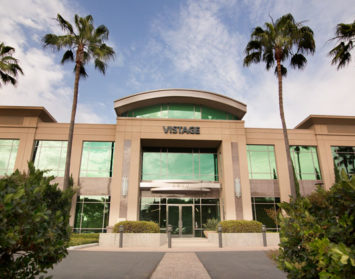By Thor Kamban Biberman
 Office and industrial tenants in San Diego County are clearly in the driver’s seat, but experts warn they had better jump on their lease renewals now, before a window closes within the next couple of years.
Office and industrial tenants in San Diego County are clearly in the driver’s seat, but experts warn they had better jump on their lease renewals now, before a window closes within the next couple of years.
That was a conclusion at a sponsored event at Newport National Corp’s newly completed 218,530-square-foot Ventana Real office complex in Carlsbad.
Scot Ginsburg, predicted while it will be a tenant-favoring market in 2011, the market will become neutral in 2012, followed by two years favoring landlords in 2013 and 2014.
For those happy with their spaces, Ginsburg said leases should be renegotiated a year before the end of the lease term to lock in tenant improvement dollars and free rent.
“The fact is, most tenants only review the lease toward the tail end of it,” Ginsburg said.
Life science tenant should start preparing for a renewal, or a move 18 months to two years before the lease expires.
With rental rates at their lowest level in years, tenants are frequently heading for nicer digs when they can get them for an equivalent rent.
“There has been a tremendous amount of ‘flight to quality’ going on,” said Scott Brusseau, Newport National president.
While Newport National has plenty of amenities at its Ventana Real complex, it must keep the lease rates low enough to bring them in and still handle the debt service in a market that is 30 percent vacant.
“That’s about 2 1/2 times what it was before the recession,” Ginsburg said. “It means space has been sitting for 12 or 24 months,” he said.
Ginsburg noted there are two schools of thought as to whether it makes sense for a tenant to renew at what almost certainly will be a more favorable rate, or move.
He said a lot depends on their future space requirements.
Ginsburg said while there is a perception that it is cheaper to stay in place, there are cases where moving makes a lot more sense.
He said he has seen a 20 percent discounts in the price of spaces because a given tenant was willing to move.
Scott Biel, a partner with the law firm of Minz Levin Cohn Ferris Glovsky and Popeo PC, was a bit more cautious.
“Going into a new building is always a bit of a risk. You never know what you’re getting,” he said.
Biel added that subletting space, while generally cheaper, presents whole new layer of risk if something happens to the primary tenant.
Termination, contractions rights and expansion rights may be part of the package as well. “It’s simple. If you do not ask you do not get,” Ginsburg said.
“You wouldn’t have gotten a move and a data cable allowance years ago,” he said, adding that landlords today are more intent on keeping their tenants rather than pushing rents.
As for free rent, depending on the location, the quality of the building and other factors, Ginsburg said the range is generally one or two months gratis for every year of the lease.
In Carlsbad — where about 800,000 square feet of office space has been added in the past three years and vacancy rates are pushing 30 percent — the free rent figures may go higher than that.
TI allowances can also make a huge difference.
Ginsburg said while a renewal on a 40,000-square-foot property for California MedTech in Rancho Bernardo only saw a 10-cent difference between the asking rate of $1.35-per-square-foot and the actual renewal rate of $1.25-per-square-foot, the renewal rate would only have been about 99 cents without the TI allowance.
Ginsburg said there are plenty of other things for a tenant to be concerned about — not the least of which is the fiscal health of the landlord.
Scot Ginsburg is an executive vice president of Hughes Marino, a global corporate real estate advisory firm that exclusively represents tenants and buyers. Contact Scot at 1-844-662-6635 or scot.ginsburg@hughesmarino.com to learn more.








